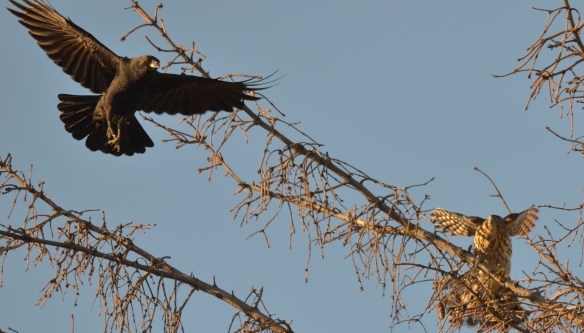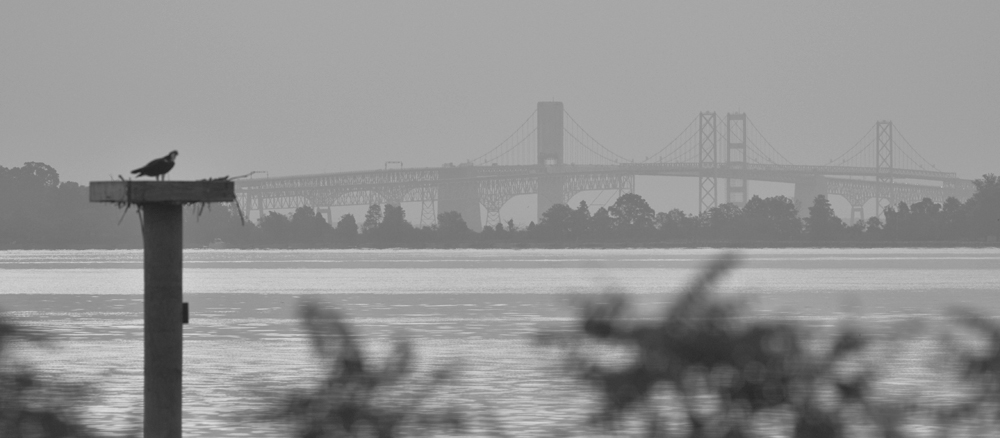It was a cool, clear dry morning, perfect for birding. I headed for Possum Point, arriving a little after dawn. After checking the point for seabirds, I headed back up the hill, and was treated to a stand off between a Cooper’s Hawk and some crows who didn’t want him in the ‘hood. The hawk was adamant about remaining perched in a large dead tree, and counter-attacked several times before moving to a nearby pine where the harassment continued. He eventually left the area, but the struggle for dominance was a sight to see, and the sort of thing that keeps birders coming back for more. I continued on to Greenbury Point, where I got a few nice shots.

Now that the Ospreys have left, this Great Blue Heron has occupied their nesting platform as a resting spot.

I’ve seen Turkey Vultures in this tree before, but it, too, is usually occupied by Ospreys.

This piling at the tip of the point is almost always occupied by a seabird like this Ring Billed Gull.

As I headed up the hill from the point, I heard a loud racket from several Crows, and it quickly became apparent they were mobbing this Cooper’s Hawk, lower left in the dead tree.

After taking some distant shots, I crept closer to get a better look. I may not have succeeded had the hawk not been so pre-occupied with the Crows.

When I’ve seen hawks mobbed in the past, they have usually been quickly driven off, but this guy elected to attack the Crows. Here, he is heading up to do battle.

The Crow recognized the threat, and quickly took off, but not for long.

As the Crow left, the hawk banked to return to his perch.

The Crows quickly returned and continued their harassment.

The hawk attacked once more.

He returned to the tree, and here he’s scanning for the Crow’s return.

He finally gives me a relatively unobstructed look.

The Crows don’t give up easily.

A good look from the front.

The Crows returned and he attacked once more.

The Crows don’t give up easily.

Even though they’re of a similar size, the Hawk has no fear of the Crow.

The battle continues.

The Hawk is running out of patience.

Close call!

The Crows are as determined as the Hawk.

I was amazed the battle had continued this long. (8 minutes by this time).

Finally, he’s driven off to a nearby tree.

This appears to be a Great Crested Flycatcher.

He’s small and far away, but he appears to be an Eastern Phoebe.

A closer look at our Eastern Phoebe.

A look at the Bay-Bridge from Possum Point.

I’ve been taking bird pictures for about a year, and this is the first Rock Dove (Feral Pigeon) I’ve been in a position to photograph. In fact, I nearly stepped on him.


This Blue Grosbeak will be migrating soon.

I need a remote branch clipper for birds that pose like this Palm Warbler.

Mockingbirds may be the bird I see most often.





















































































































































































